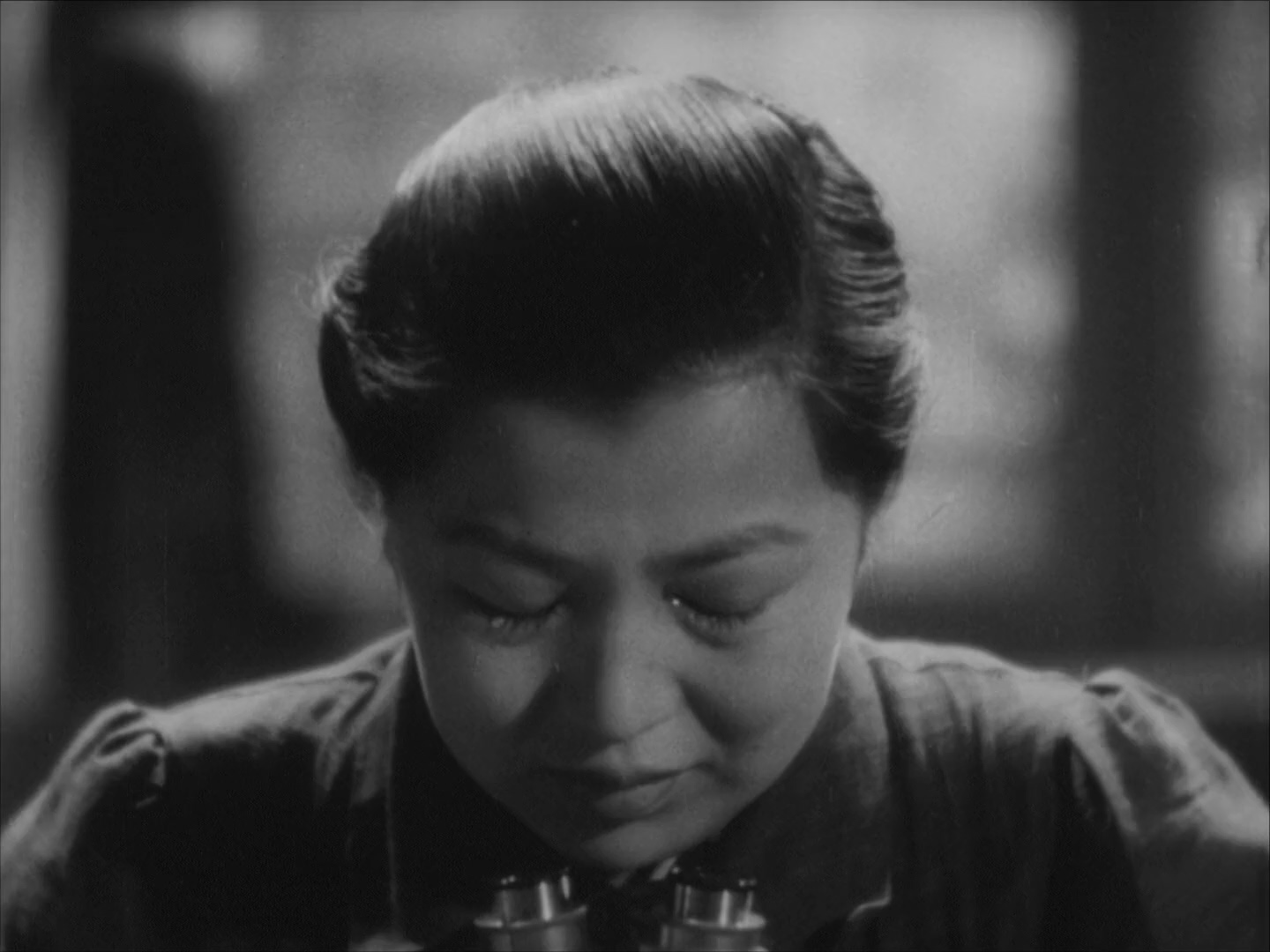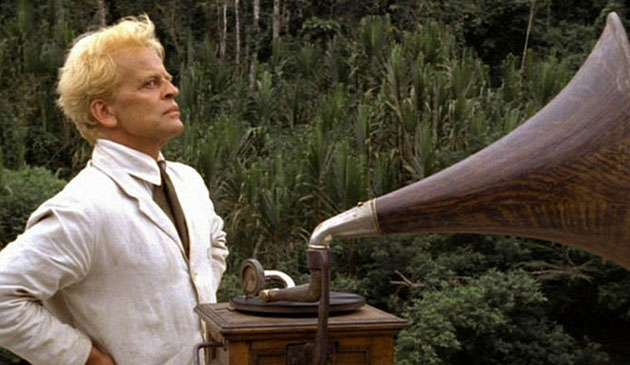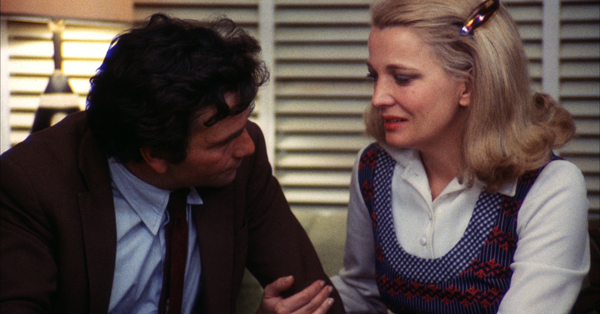5. Chinatown
Faye Dunaway – Roman Polanski

One of the most difficult women in Hollywood and one of the most autocratic directors in cinema – what could go wrong? The legendary clash between actress Faye Dunaway and director Roman Polanski during the production of Chinatown began before cameras ever rolled.
During the initial makeup test, Polanski infamously spread a heaping serving of powder to make the pale actress positively gaunt. By Dunaway’s account, Polanski was a bully who refused to give her character motivation, other than to scream, “Your salary is your motivation!” as scenes were being shot. Tales of hair plucking, shoving and screaming fights were all dwarfed by an incident in which Dunaway allegedly hurled a cup of urine at the director’s face.
And yet somehow, magically, Chinatown went on to win high praise and moved costar Jack Nicholson from rising star to sought-after leading man. Dunaway’s character in the film is a troubled woman from a rich and powerful family with a terrible secret. She starts off as a tough lady, but as the mystery in the film is revealed, she sheds her strong veneer as her fears and pain come bubbling to the surface.
The transition seems analogous to her relationship with Polanski off screen. Dunaway’s character slowly has her defenses destroyed as she dares to defy her overbearing father in the midst of a high stakes political game that includes murder and incest.
The apex of Dunaway’s performance in the movie occurs near the end, when the dark and terrible secret she’s been hiding is forced from her in a series of hard face slaps by Nicholson’s character. Her surrender and deconstruction happens in a very visceral and physical way, expressing a violence from her life through yet another violence thrust upon her in that moment.
It’s hard to pull off the transition from Iron Lady to broken damsel in a such a convincing way, but Dunaway’s tour-de-force in the sequence is not only believable, it may well have been the product of the painful exchanges with an abusive director who broke the actress down in real life.
6. The Most Beautiful
Yōko Yaguchi – Akira Kurosawa

It was an unfortunate fact that the great director Akira Kurosawa began his career in the midst of World War II. His second feature film, The Most Beautiful, was made as a propaganda piece by compulsion of the imperial government of the time. Nonetheless, Kurosawa sought to make a great movie and didn’t come up short.
The film centers around a group of factory working women toiling to make lenses for use by soldiers in wartime Japan, and how they drive themselves to excellence for their managers and their country’s hope for success. Kurosawa made his cast sleep in the factory barracks to prepare for the role and limited their meals and leisure activities to evoke an empathetic performance from the actresses.
Yōko Yaguchi plays the lead character, who is determined to go above and beyond in her work, to the point of exhaustion. The actor fought bitterly with his protagonist to get the performance how he wanted. Yaguchi was no pushover, however. She threw rage right back at the fiery Kurosawa, exasperating them both.
Under pressure from the state to complete the film, the two ultimately worked together and Yaguchi solidified her role in grand form. In a climactic scene, she is seen working without sleep to meet her quota and ensure that the lenses are made to standards. Her exhaustion is palpable, her unswerving drive emanates from her body language which is at once rigid and vital.
Kurosawa uses close-ups to capture the real sweat on her brow, her chafed and worn hands and even her tired feet to great effect. Despite its propaganda background, a portrait of a determined spirit emerges which is unforgettable, coming from a very real place of conflict and challenge.
One other thing this tumultuous collaboration produced was a real-life marriage. Kurosawa and Yaguchi got together and were wedded after the film wrapped, and they stayed husband and wife until his death.
7. Fitzcarraldo
Klaus Kinski – Werner Herzog

Turbulent actor Klaus Kinski and fearless director Werner Herzog had a relationship so contentious, the latter decided to name his documentary about their interactions “My Best Fiend.” Despite the tumultuousness of their collaborations, the pair managed to make 5 great feature films together.
Of them all, Fitzcarraldo proved to be one teaming that brought both to the brink of war. Based on the exploits of a Peruvian rubber baron, the story centers on the titles character’s obsession with accessing Amazonian rubber plantations in the most remote of areas.
To that end, a giant steamship is actually dragged over a mountain by an army of indigenous peasant slaves, with an almost Ahab-like obsession. Herzog pushed his cast and crew to the edge by filming in the jungle and actually hauling a real boat over using real human labor as in the story itself. This caused several problems, including the death of two extras in the river.
Kinski, meanwhile, always fancying himself a macho adventurer, was finding himself unable to cope with the grueling conditions and turned his frustration into rage against every single crew member, including the indigenous extras and especially the beleaguered director.
Documentary footage from the production captured Kinski’s rantings and ravings as he insults key production staff and repeatedly threatens to walk off the movie. Herzog had a tough time controlling his maniacal star, but then fate intervened. The natives used as extras came to hate Kinski and allegedly even offered to kill the man – an offer which Herzog refused. He exploited this tension to great effect, however, during a scene where Kinski’s character is surrounded by the natives at a feast.
Herzog let his star know about the tribe’s homicidal intentions, and during the performance, made sure Kinski was trapped with no option for escape. Watching the sequence, the terror makes even Kinski’s exaggerated eyes pop almost out of his head.
It is said that within every bully, a crumbling coward resides, and this scene confirms the assertion. Kudos must be given to Kinski, however – a great actor in his own right – as he somehow is still able to channel the character’s motivation and maintain enough control so as to not spoil the overall balance of the scene.
8. A Woman Under the Influence
Gena Rowlands – John Cassavetes

The great indie filmmaker John Cassavetes was infamous for the rigors he put his actors through. In an attempt to uncover the layers of human frailty, he was constantly pushing buttons to evoke the dark underbelly of character psyches as channeled through his troupe (he used the same company of actors over and over). This became especially contentious in his turbulent relationship with his wife and collaborator, the great actress Gena Rowlands.
Despite their marriage lasting until his death, Cassavetes’ fights with his wife on and off screen are the stuff of cinema legend. While these fireworks produced many amazing performances, none surpassed Rowlands’ turn in A Woman Under the Influence.
Portraying a married woman facing a mental collapse, the actress delivers scene after scene of unparalleled force, unable to face her world, not even her closest family.
Besides the director’s trademark agitation methods to motivate his characters, another tension lurked behind the scenes: the artistic couple mortgaged their home to the tune of $500,000 to fund the film – a tidy sum of money back in 1974. This all fueled what is uncontestably the greatest performance of Rowland’s career.
It’s hard to pick any one part of the film as a standout, but in one especially painful moment, upon return from a mental institution, Rowland’s character is greeted by her children. Even for the most vulnerable of people, under the friendliest of circumstances, she just can’t keep it together and breaks down into raving tears. Her acting at this point is so convincing, it would be easy to overstate just how much real-life pain was happening behind the scenes.
As it happens, the famous couples’ marriage wasn’t as much rocky as it was by nature overly energetic, but there was enough purposeful friction to generate outstanding moments such as is delivered in this masterful film.
Author Bio: Argentinean-born New Yorker Miguel Cima is an NYU Film School alumni and a veteran of the entertainment biz (Warner Bros, Dreamworks, MTV, etc.). An accomplished writer, filmmaker, and comic book creator, Miguel’s movie, Dig Comics, won Best Documentary at the San Diego Comic Con. A culture junkie, foodie and world traveler, he is happily unmarried to a rockin’ heavy metal vocalist gal and slavishly serves his true masters – two dogs and a cat.